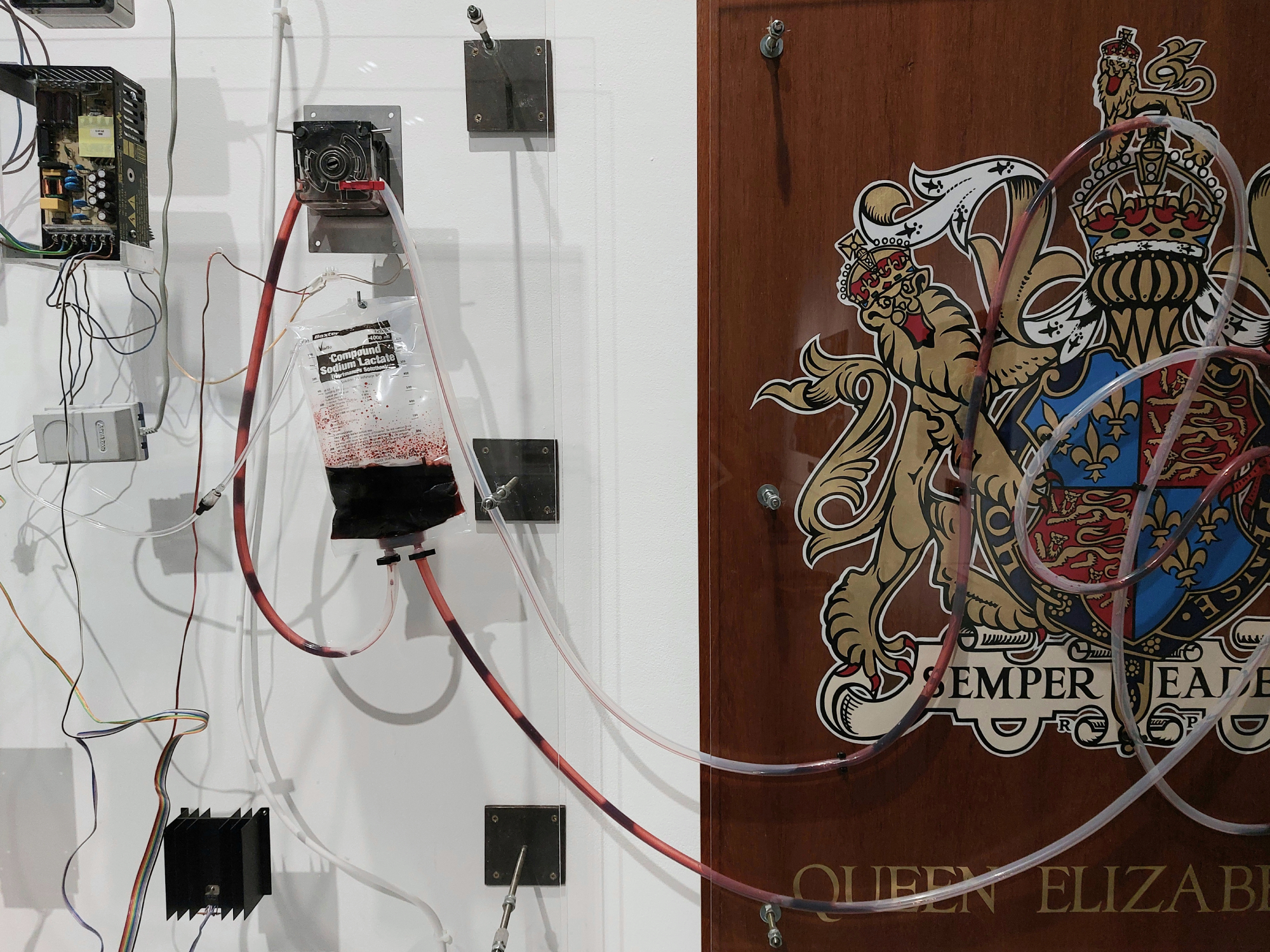
[ad_1]
BRISTOL, England — Donald Rodney saw the world through metaphor. He suffered from sickle cell anemia throughout his life, meaning he endured pain, a difficult treatment schedule, and reduced mobility. Rather than shying away from these elements, he drew upon them as metaphors for the societal ills of racism, inequality, and colonialism in his art. Visceral Canker at Spike Island brings together all of Rodney’s surviving work, spanning 1982 to 1997, the year before he passed away at age 36.
The exhibition demonstrates the breadth of Rodney’s work and the many ways he incorporated aspects of his sick body, or else emphasized its frequent absence from family or art-world events. For example, his 1987 work “The House that Jack Built” is a self-portrait in which a scarecrow-like figure sits in front of a silhouette of a house made of X-rays of the artist’s chest, while “My Mother, My Father, My Sister, My Brother” (1996–97) is a tiny sculpture of a house crafted from skin taken from the artist’s body during a medical operation. But the most moving work of the show might be “Psalms” (1997), in which an unoccupied motorized wheelchair programmed to avoid obstacles moves around the exhibition space.


Visceral Canker takes its title from a 1990 work of the same name. This piece consists of two wooden plaques depicting the heraldic coats of arms of Queen Elizabeth I and John Hawkins, one of the first British slave traders. These are superimposed by a series of plastic tubes, intravenous drip bags, wires, and electric pumps circulating imitation blood. In 1564, Hawkins was given a royal ship in order to enslave Africans and sell them in the Spanish colonies in the West Indies; he ultimately kidnapped more than 400 people. His profit was so great that the queen granted him a new coat of arms bearing the image of enslaved men. Rodney’s installation cuts to the heart of the little-known relationship between the slave trade and Elizabeth I, who is often seen as a keystone of British history and national pride. Within the lifeblood of Britain, Rodney suggests, there is the ever-present “canker” (an Elizabethan term for “disease”) of slavery and colonialism.
While the fundamental message of the work is instantly clear, the metaphors within the work are more complex than they appear at first glance. Instead of using a single pump system to move the blood across both coats of arms, the work is divided into two imperfectly mirrored halves employing separate circulatory systems. This suggests not a simple linear connection between Elizabeth I and the slave trade, but rather a complex systemic problem that is hard to isolate and eradicate. The wall text notes that Rodney originally wanted to use his own blood, but the city council who commissioned the work insisted upon the use of imitation blood. Rodney, therefore, wanted to viscerally demonstrate his own ancestral link to the Black people enslaved by Hawkins and represented on his coat of arms, further complicating the metaphor. It’s complex, Rodney seems to say — and that’s not something to be resisted.

Donald Rodney: Visceral Canker continues at Spike Island (133 Cumberland Road, Bristol, United Kingdom) through September 8. The exhibition was organized by Robert Leckie and Nicole Yip.
[ad_2]